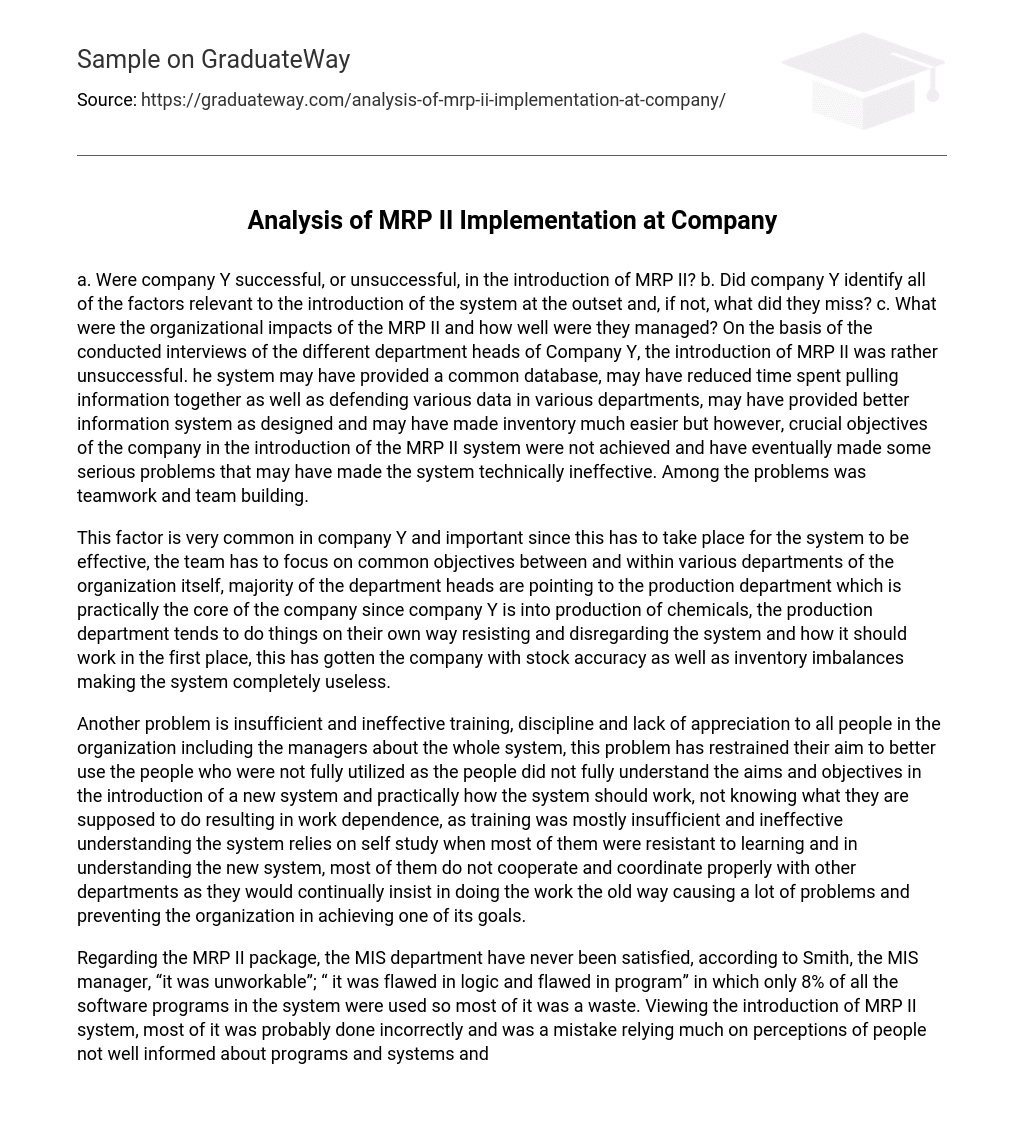According to interviews with department heads, the implementation of MRP II at company Y was ultimately unsuccessful. Although the system did offer benefits such as a common database, streamlined information management, improved systems, and simplified inventory, the company failed to achieve its key objectives and encountered issues that rendered the system technically ineffective. One notable problem was a lack of teamwork and team building.
Common objectives must be prioritized within and between departments at company Y in order for the system to be effective. The production department, being the core of the company’s chemical production operations, is often cited by department heads as a major source of resistance and disregard for the proper functioning of the system. This autonomous behavior has resulted in stock accuracy issues and inventory imbalances, rendering the system completely futile.
The organization is facing a problem that affects their utilization of personnel due to inadequate training, discipline, and appreciation for all individuals, including managers. Many employees lack awareness of the objectives and practical implementation of the new system, resulting in an unclear understanding of their roles and responsibilities. Consequently, they depend on others for guidance and support. Moreover, the provided training has been insufficient and ineffective, leaving employees to rely on self-study to comprehend the system. Regrettably, some employees resist learning and comprehending the new system, which leads to a lack of cooperation and coordination with other departments. Instead, they persistently use outdated methods that cause numerous issues and impede the organization’s goal achievement.
According to Smith, the MIS manager, the MRP II package has never been satisfactory for the MIS department. Smith described it as “unworkable” and “flawed in logic and program”. Only 8% of all the software programs in the system were actually used, making a significant portion of it a waste. The introduction of the MRP II system was likely done incorrectly and was a mistake because it relied heavily on the opinions of uninformed individuals rather than conducting a thorough analysis to determine which system would be best suited for each specific site. This is important because all three sites produce different chemicals with different system requirements.
Company Y, which is a large organization with 4 different sites and various product operations, made the error of not conducting thorough analysis of their operations and system requirements before opting to purchase a packaged software solution. They failed to consider that a pre-made package cannot fully meet the needs of such diverse areas of operation. The MIS department also voiced concerns about the lifespan of packaged software, as it inevitably requires increasing levels of modification over time. Eventually, there will come a point where maintaining the software becomes unviable and it needs to be discontinued. Unfortunately, the decision to proceed with the project was made by individuals within the organization who outnumbered the MIS department and had little expertise in programming. Consequently, this decision-making process was undoubtedly a mistake.
Despite it being their policy to buy packages, purchasing the MRP II package has caused confusion and operational issues in multiple departments. This occurs because there are instances where packages fail to fulfill their intended purpose. The MIS department had to make changes to the system itself, but unfortunately, these changes were initially implemented incorrectly. Although they were helpful, they only examined the area after modifying the system. It would have been better if they had first comprehensively examined and studied all areas and departments before proceeding with the design and changes. It is crucial for them to have a complete understanding of how different areas of the sites function prior to making system modifications.





